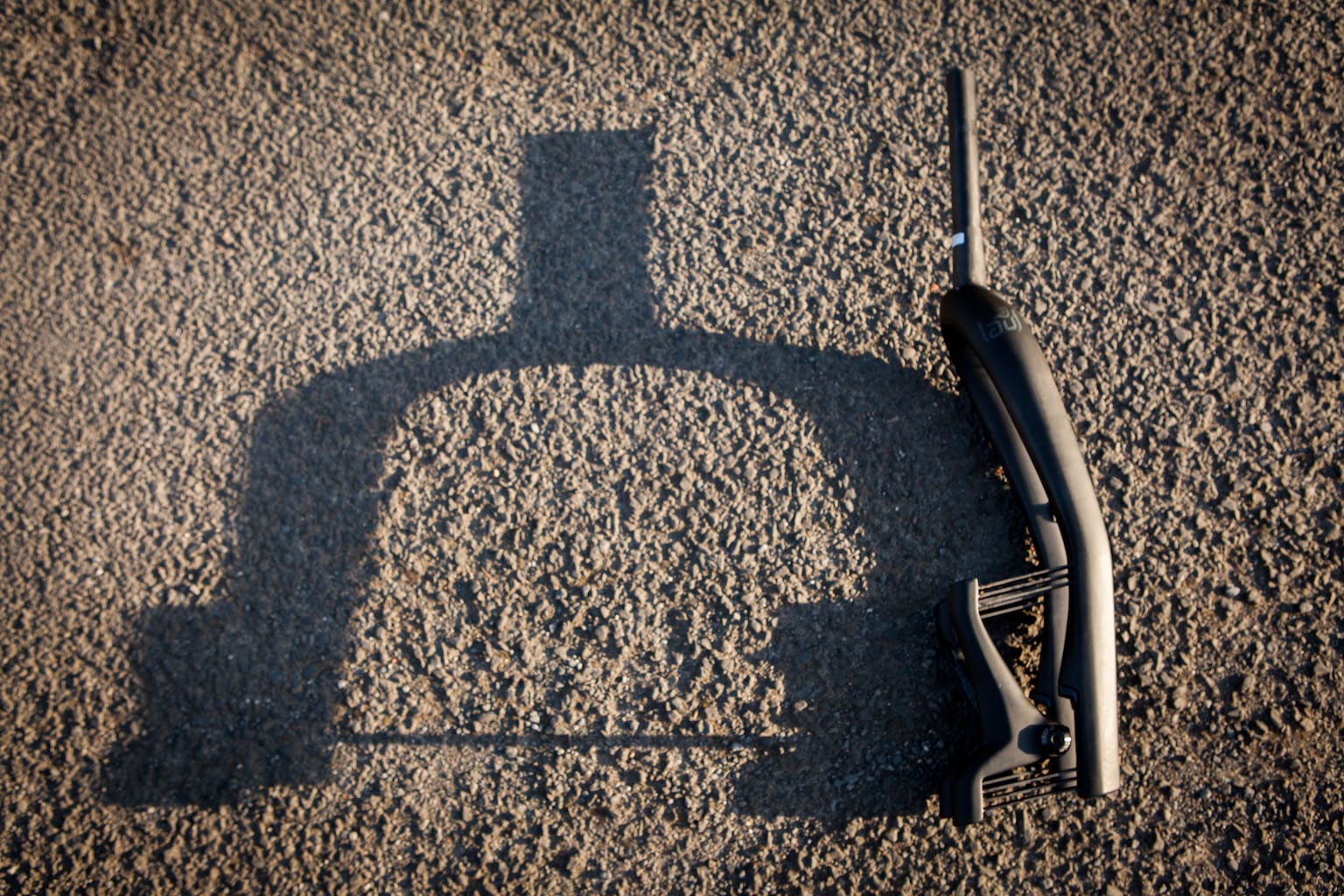- Reviewed: Lauf Grit
- From: Upgrade Bikes
- Price: £800
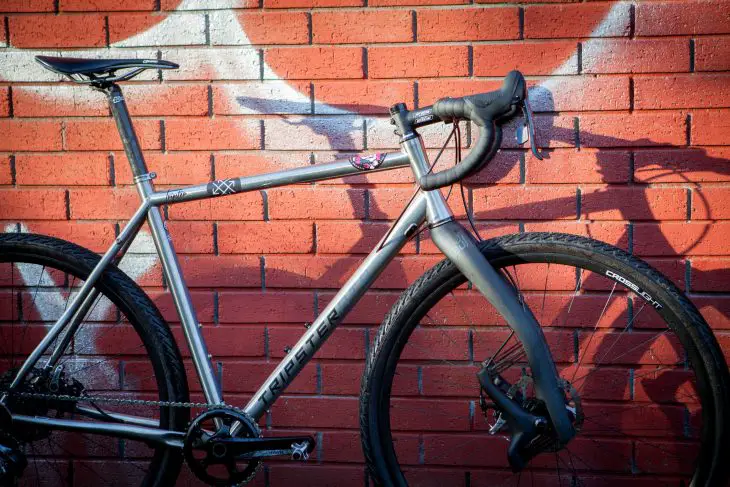
In the short time that gravel has been “a thing”, we have already seen the evolution of bikes and accessories. For many, gravel bikes are their go-anywhere option… from rough roads to terrain that would previously only been the preserve of mountain bikes. Tyres are getting more voluminous, more mountain bike-esque geometries are gaining some headway, and a few companies are dipping their toes into the world of suspension.
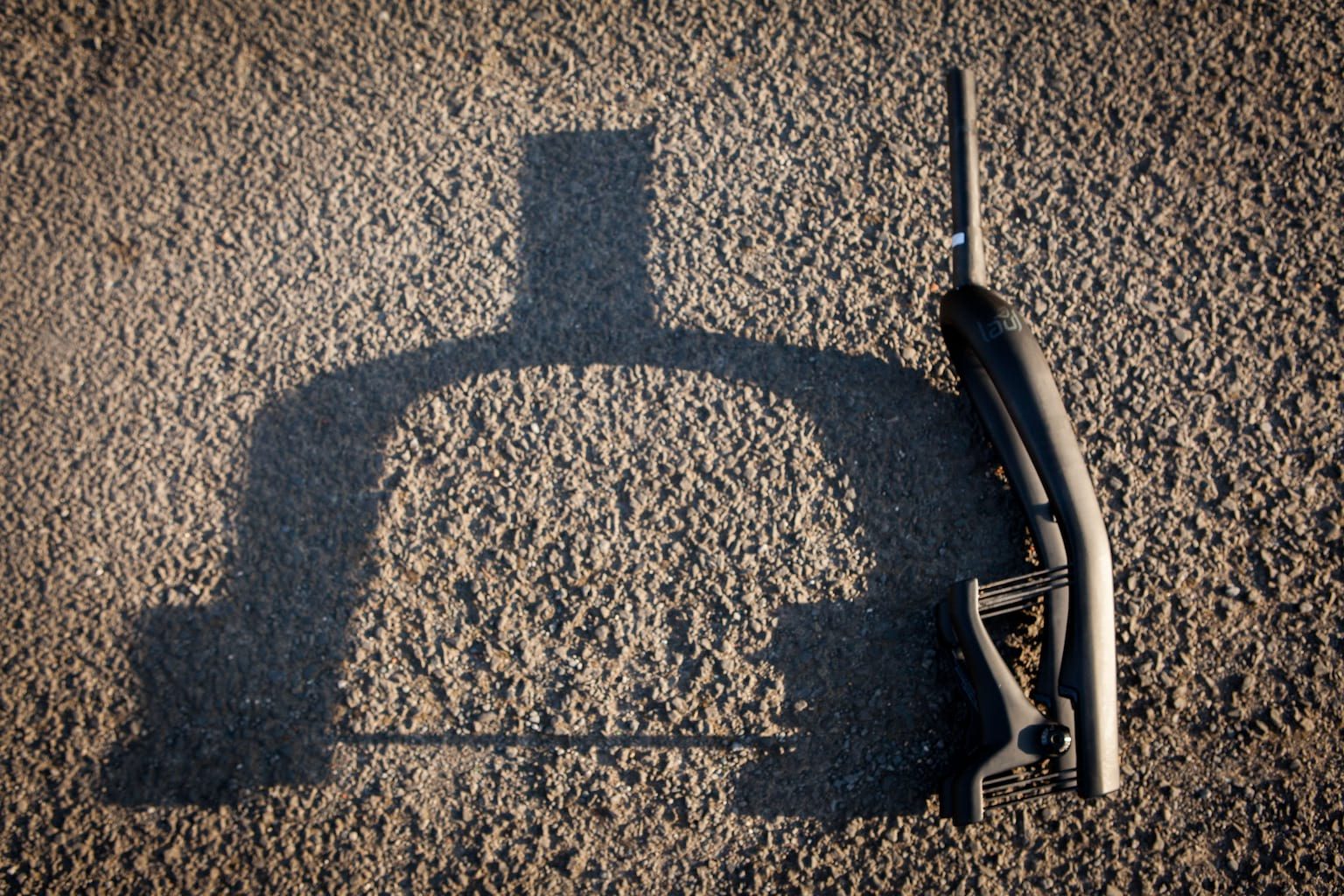
Specialized have the Futureshock, Canyon the Hoverbar. Niner have even shared their prototype full suspension gravel bike. Lauf preceded them all though. The Icelandic company has been ploughing its own furrow since 2010. Its fork range covers offerings for fat bikes through to gravel, all of which follow the same basic design principle of using leaf springs to deliver modest amounts of suspension.
Getting Gritty
Lauf are already on to a winner, naming its gravel fork the “Grit”. Wise choice, guys, wise choice. The Grit eliminates all “moving parts”, effectively removing maintenance, improving reliability and reducing weight vs a traditional suspension fork. Lauf has done this by using six glass fibre leaf springs either side of the fork leg, which suspend the axle. According Lauf, these are:
Made of military spec S2 glassfiber that is extremely tough on hits and flexible in the direction of the travel. The springs have been “shocked” in our test lab over 1.500.000 times reaching 22mm amplitude every time.

The springs deliver 30mm of travel – not downhill mountain bike stuff, but that’s not what they are designed to do. They are intended to be extremely compliant over small lumps and bumps, as you’d expect to find on a typical gravel/trail spin. The spring rate then ramps up progressively to (hopefully) avoid some harsh top-outs. Other than those springs, the majority of the Grit is made of carbon – from the legs to the steerer to the suspended axle mounts.
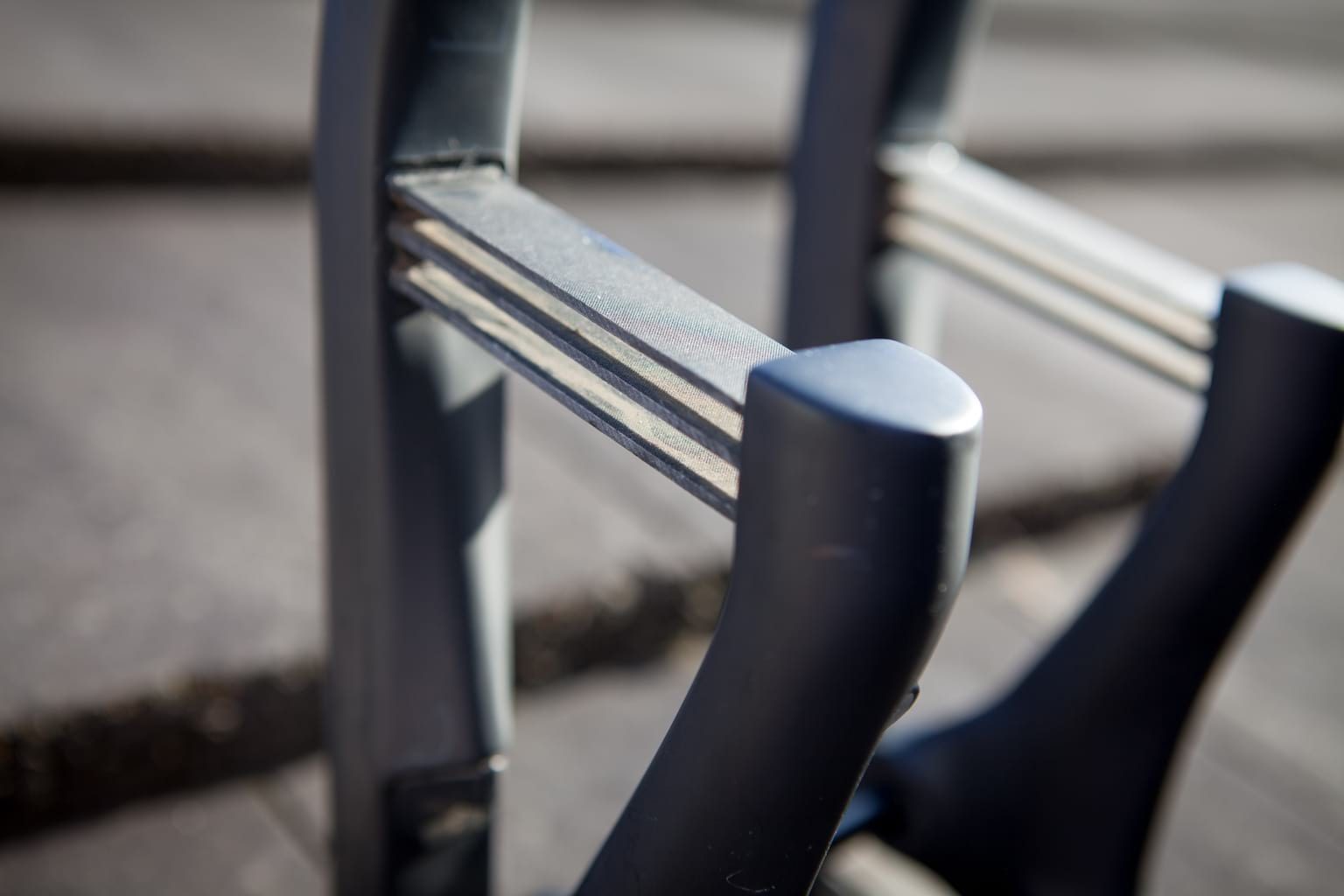
The axle-to-crown length of the Lauf is 415mm. When comparing to your current fork, it is better to use its sagged length of 409mm. (For those of you who are new to this whole suspension thing, this is the length of the fork once you are sat on the bike and have your weight naturally resting as it would when you are riding – the spring compressing slightly under that weight. When it is fully compressed, the Lauf’s a-to-c is 385mm. What the hell does all this mean? Well, if your current fork is a shorter than the Lauf’s sagged length, your bikes geometry will be altered. The bottom bracket will be a little higher, and front end a little slacker. Depending on the differences and how sensitive you are to them, this will either be entirely unnoticeable, or need a little getting used to. On the two bikes I tested the Lauf on, the differences were marginal enough that it took little to no time to adjust.
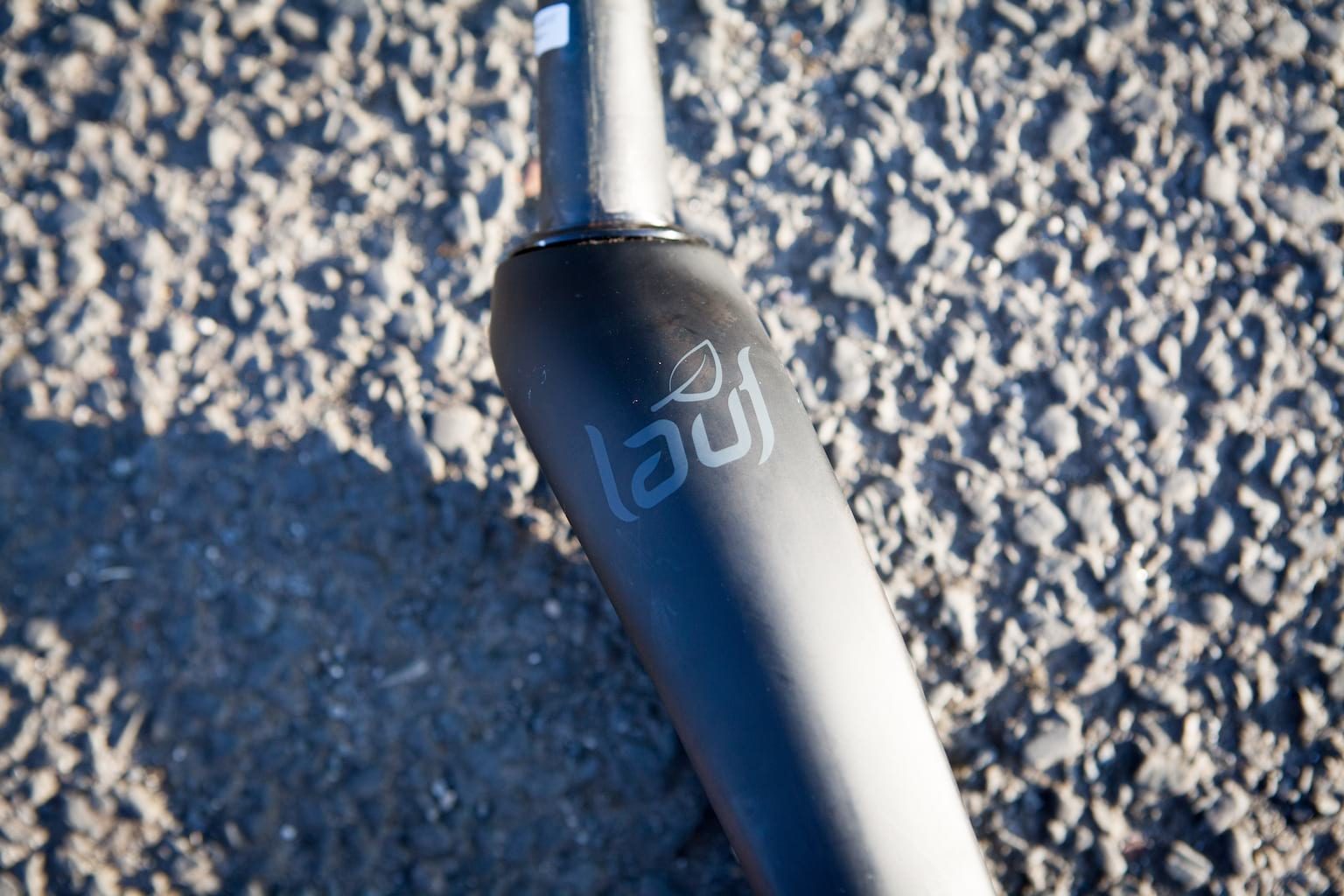
The Grit is available with either a 15mm or 12mm front axle. Depending on your current wheelset, we’d probably recommend the 12mm for future compatibility – it seems to increasingly becoming the standard on gravel bikes. The brake mount is 160mm flat mount. If you have post mount brakes, you’ll need an adapter and again, the minimum rotor size you’ll be able to use is 160mm.
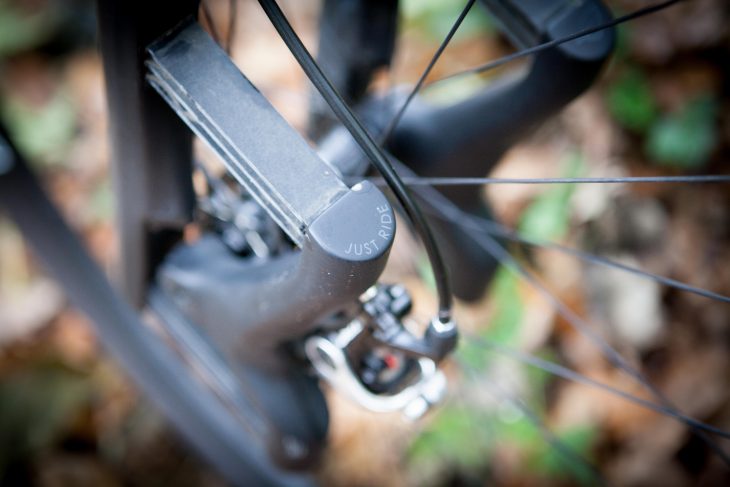
Specifications
- Wheels 700c and 27.5″
- Max tire width 700x42c and 27.5×2.1”
- Travel 30mm
- Weight 900g claimed (893g on our scales, with a cut steerer)
- Unsprung weight 250g unsprung weight
- Rider weight limit 110kg / 243lbs
- Axle 12mm or 15mm Lauf thru axle options.
- Hub spacing 100mm
- Rake 47mm
- Axle to crown 409mm (with 6mm sag)
- Steerer Tapered 1 1/8” – 1 1/4” (uncut length 300mm)
- Min rotor size 160mm
- Brake mount Flat mount

Ride
I was initially a little wary of the Grit. I’ve used the Lauf Trail Racer mountain bike fork, and in general, I didn’t get on with it all that well. The undampened suspension left it feeling very pogo-like and I was left longing for a “normal” suspension fork. The starting point of my thoughts about the Grit were a little different though. This was less a comparison with other suspension options, and more a comparison to riding with a typical rigid fork. Would any improved comfort and handling counter the extra weight and any other potential downsides?
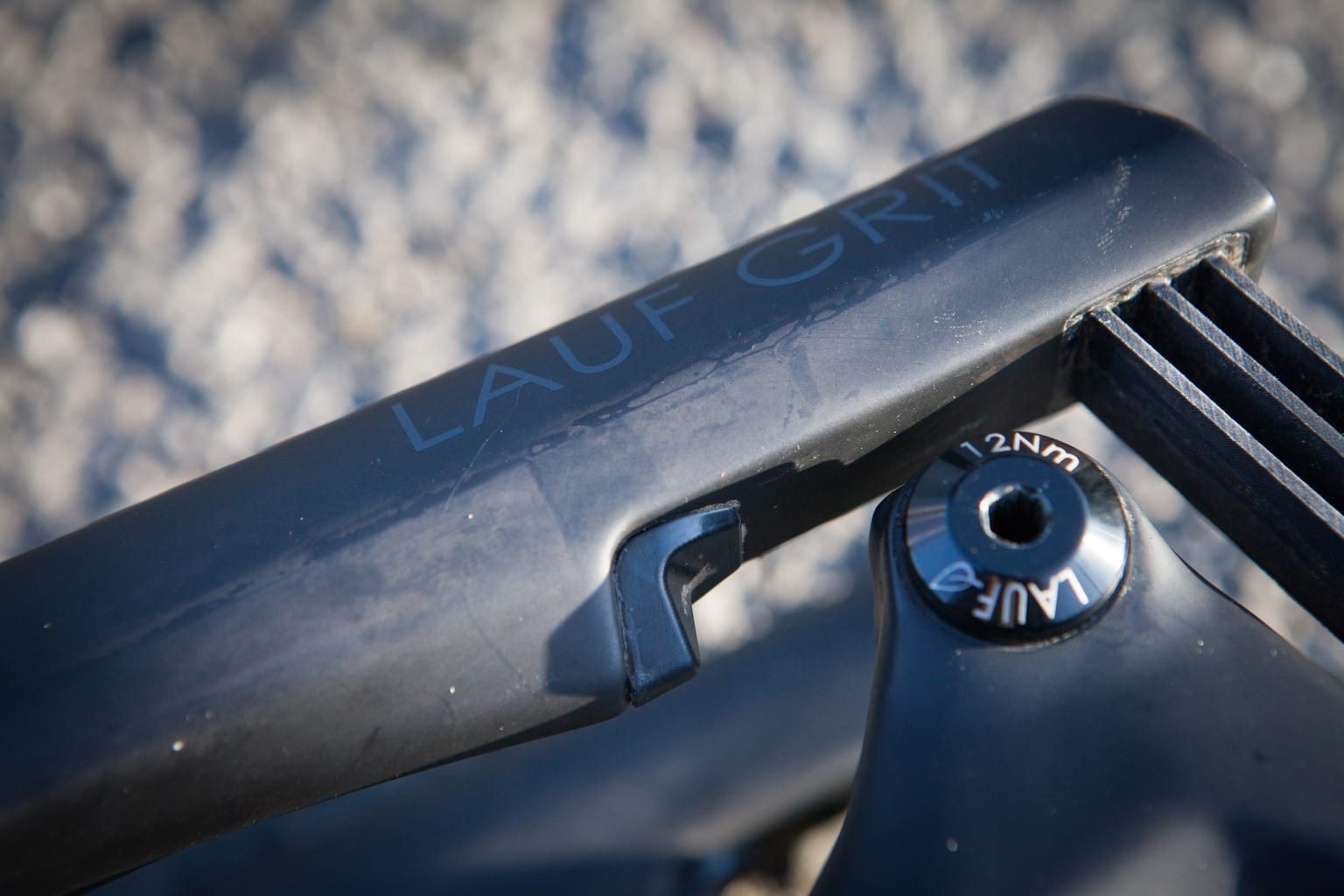
The first thing I noticed was the Grit felt a little more controlled than the Trail Racer. I think is largely down to the relatively small amount of travel on offer. As the fork rebounded, it had significantly less “kick” – to the point that I rarely noticed it. What did I notice though? Well, almost immediately, I was able to hit rougher sections at a speed I would not normally think of as possible on a gravel bike. I would initially wince as I pushed through into rooty sections or over loose rocks, only to find the Lauf soaked things up and let me continue. There is, of course, a limit to what 30mm of travel can do. Smash into anything too big and without finesse and the Lauf would let you know, with an awkward top out and a jarring ride. This is no different to what a rigid fork would feel like in the same scenario, and the Lauf still took a little sting out of the impact – it is actually to the fork’s credit that it allowed me to get carried away occasionally and forget that I was riding a gravel bike rather than a mountain bike. On that note, it’s also worth remembering that while the Lauf will guide the front end of your bike over rough ground, you still need to get the back through without incident.

Back to the kind of terrain that the Grit was really made for. On gravel, dried ruts and the typical lumps and bumps of fire roads and bridleways, the Lauf brings a significant increase in comfort. General trail chatter is muffled and on long day rides, my arms and palms felt less battered than they might otherwise. Again, I was also able to cover that ground a little more quickly – enjoying more confidence, less fatigue and the knowledge of a bit of a “get out clause” should the going get rougher around the next corner.
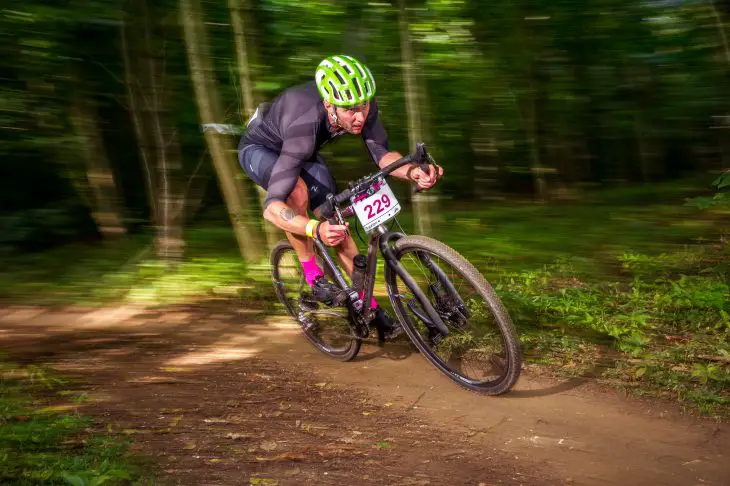
So far, pretty good. The Lauf wasn’t without its flaws though. When out of the saddle and honking, the fork was prone to diving and twisting a little, to the extent that the brake rotor would rub on the caliper. This was most noticeable on tarmac and smooth trails – presumably when there was less to distract. That flex was also evident when cornering. When punching through tight corners it was possible to feel the fork twist, and when riding down steeper trails, the fork would dive under braking, tipping your weight further forward when least wanted. These issues led to a vague trail feel – sometimes enough to be unnerving. Again, I need to measure any criticism here with the fact that the Lauf was encouraging me to ride terrain faster and harder than I would have done with any other fork. While it would be great to see a little more torsional stiffness, I learnt to live within the forks limits and had fun finding out where they were.
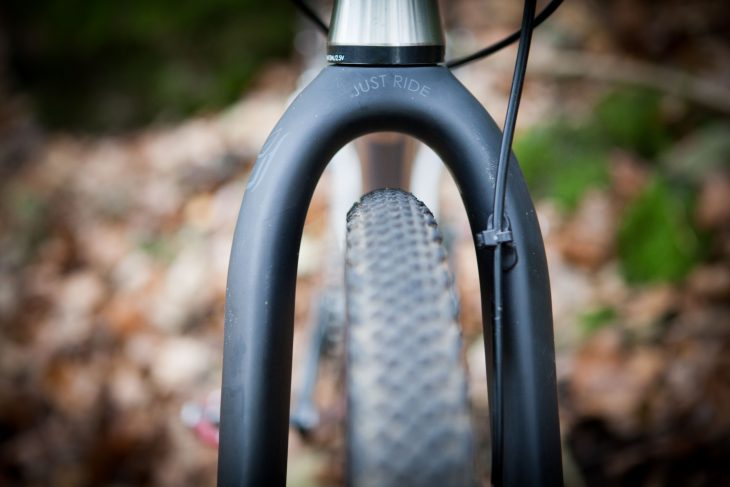
There was a tonne of clearance, even with 700x45c tyres and it was great to know that all the fork would need was a wash down after the muddiest of rides… no replacing seals or servicing internals. In general, the Lauf added 400g or so weight to the front end of the bikes I fitted it to. While this was maybe noticeable initially, it was quickly forgotten, and I’d suggest that the extra comfort/speed was generally worth the weight penalty.
Summary
While not perfect, the Lauf Grit is a great addition to a go-anywhere gravel bike. An innovative and functional way of adding comfort over typical #dirtydropbargoodness terrain, the Grit also allows you to push the limits of what a gravel bike can do.

